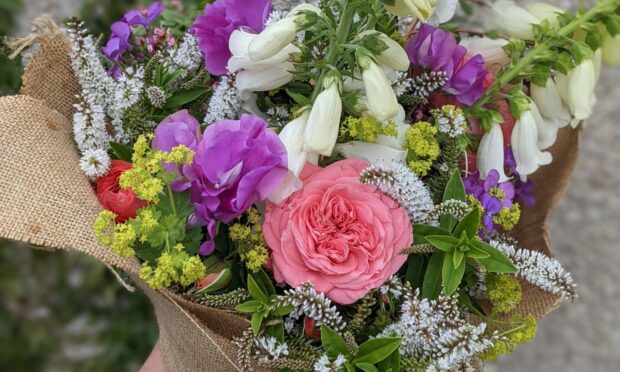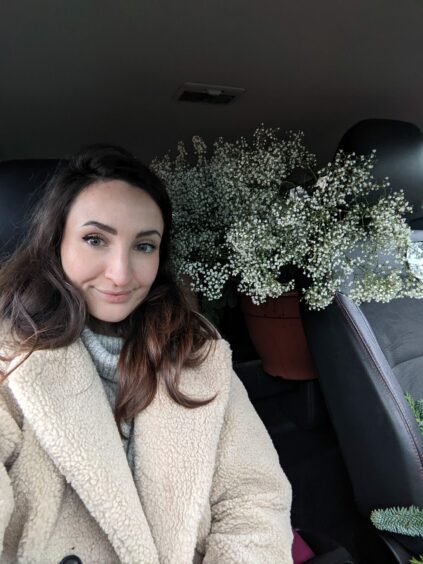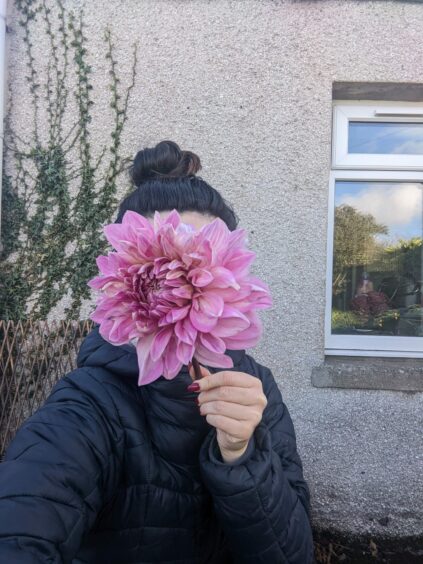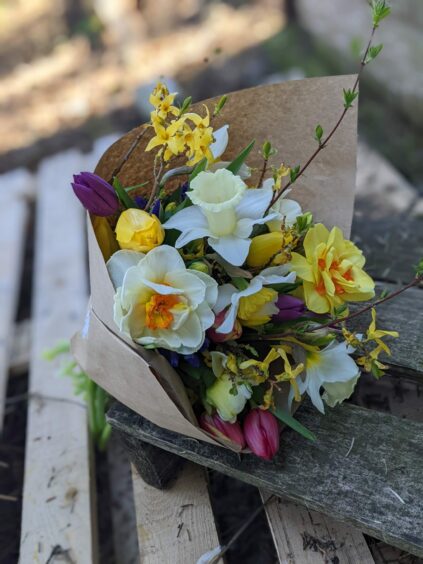Looking out at your wind battered, soaking wet north-east garden, you might not think it best suited for a flower garden packed with peonies, roses and tulips.
Local florist Ellie Patterson is here to prove you wrong.
The 27-year-old is a financial advisor by day and self-taught florist by night, working from her home in Laurencekirk.
Her floristry business, Fig & Thorn, was born out of a newfound passion for wreath making back in 2016 and has since blossomed into a bespoke event and home floral service.
After learning more about the industry and discovering how unsustainable it can be, Ellie committed to making sure her business was doing something different.
Unsustainable industry
Ellie believes flowers and arrangements used at large events or on TV are often unsustainable.
“There’s so much being imported and sprayed with chemicals,” she explained.
“When you look past the pretty heads of the flowers, they are most often poked in foam that has carcinogens in it, it’s really bad for you and for wildlife.”
To combat this, Ellie works from her own cutting garden at her home – which she started with three different species but has expanded to contain around 30.
She also works with local flower farms and florists to ensure as many of the flowers she uses as possible haven’t travelled far.
However, this means Fig & Thorn heavily relies on the growing season.
In the north-east, this is between April and October, limiting how many events florists here can take on without importing the majority of their arrangements.
It is for this reason that Ellie has “put a pin in” Fig & Thorn for now, saying: “I would rather slow down things but know that what I am doing is in line with what I say I’m doing than just use less sustainable products.”
How to start cutting garden
The passionate florist is still keen to show others how they can start their own cutting gardens though.
Ellie said getting started is simple, all you need is soil, seeds, water and sunlight.
“You’re growing to cut and take inside, a bit like farming, you’re farming for flowers,” she explained.
To get started you need to identify your space – whether that be in a garden, in pots or on a windowsill – and figure out how much light it is getting.
Then it’s a case of choosing what you want to grow.
Ellie said: “Typically the kinds of flowers you are going to be growing are slightly different, you’re aiming for longer stem length, ideally around 12ins and up.
“Cut flowers are often annuals, like ones you plant in the spring that will come up in the summer and autumn.
“For a cutting garden you would only really use a flower once. Tulips for example, you put them in the ground in the autumn, they come up in the spring and you cut them right down at the bottom.”
Growing in the north-east
Contrary to what you might think, Ellie said the north-east climate is a “lucky” one to be in for growing a cutting garden.
It is more consistent to that of most places further south, and the guessing game is of when you will get flowers rather than if you will get them.
Ellie’s “failsafe” suggestions are tulips, daffodils, cosmos, sweetpeas, roses and peonies, along with things that grow naturally like spruce and eucalyptus.
If you can’t grow your own flowers but want to be more sustainable moving forward, Ellie suggested using flowersfromthefarm.co.uk to find sustainable growers near you.
“At the end of the day there are some things that are difficult to substitute, flowers are one of them because you just can’t get them year-round,” she said.
“I also buy roses in the supermarket sometimes because it’s nice and they make you feel better.
“Once you get into the spring and summer season there is so much that local farms and florists who are working locally can offer you.”
Satisfaction
Another benefit of starting a cutting garden along with sustainability is that it will eventually fund itself.
Year upon year, you can start harvesting seeds from what you have grown, meaning it becomes an almost free hobby that can literally keep on growing.
Ellie believes the whole process is all about trial and error and that she made “so many mistakes” when she started out, unable to even make a bouquet in the first year.
Despite this, the feeling when things go right makes it worth it.
“You don’t get that immediate satisfaction, it takes a long time for these things to grow,” said Ellie.
“But when August comes and you look out into your garden or plant pots or balcony or windowsill and it’s full of those flowers you put all that work into, there’s such a sense of satisfaction.
“You know your hard work has paid off.”
For more information about Ellie Patterson or Fig & Thorn check out her website, Instagram and Facebook.




Conversation